Holly Thompson's Blog, page 5
April 25, 2020
30 Hope Poems: 26. Northern Spring Amphipod
Day 26 of my National Poetry Month project of 30 Hope Poems focused on native plant and animal species that are protected under the Massachusetts Endangered Species Act.
Hopes for a Northern Spring Amphipod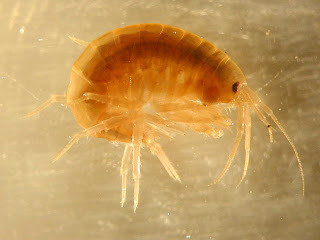 Northern Spring Amphipod (photo: Iowa Dept. of Natural Resources)
Northern Spring Amphipod (photo: Iowa Dept. of Natural Resources)
all appendagesmoving in some directionsideswimming evening
cool, spring-fed streamscrustacean congregationsno carapace needed
uropod ruddermarsupium for the youngamphipod innovation
©2020 Holly ThompsonAll rights reserved
The Northern Spring Amphipod (Gammarus pseudolimnaeus) is listed under the Massachusetts Endangered Species act as a species of Special Concern. See Northern Spring Amphipod in the Mass Wildlife’s Natural Heritage and Endangered Species Program.
Write!What species are Endangered, Threatened or of Special Concern where you live? What information can you find about them? What hopes can you imagine for them? Challenge yourself and write your own set of hope poems for endangered and threatened species near you.
Why? Why write these hope poems? Writing a poem about a plant or animal is like making a sketch--it's a form of intense study and close attention--in this case, a study of endangered or threatened wildlife and their habitats wherever we live or are sheltering. To create a hope poem, we need to find empathy for the plant or animal, try to think from their perspective, then try to puzzle words together into a poem to convey hopes. A hope poem is a mindfulness exercise at this time when hope is something we all need.
These are my hope poems for #NationalPoetryMonth2020 so far:
26. Northern Spring Amphipod25. Water Shrew
24. Blue-spotted Salamander
23. Ski-tipped Emerald
22. Common Loon
21. Atlantic Sturgeon
20. Eastern Pondmussel
19. Eastern Meadowlark
18. Barrens Tiger Beetle
17. Kemp's Ridley Sea Turtle
16. American Bittern
15. American Bumble Bee
14. Great Laurel
13. Humpback Whale
12. Showy Lady's Slipper
11. Pied-billed Grebe10. Frosted Elfin 9. Britton’s Violet8. Little Brown Bat7. Eastern Box Turtle6. Short-eared Owl5. Foxtail Clubmoss4. Eastern Ratsnake3. Piping Plover2. Eastern Spadefoot1. Yellow Oak
Holly Thompson (www.hatbooks.com) is an author who lives in Japan but grew up in Massachusetts where she is now sheltering during the coronavirus pandemic, getting outside to walk and observe wildlife whenever she can.

Hopes for a Northern Spring Amphipod
 Northern Spring Amphipod (photo: Iowa Dept. of Natural Resources)
Northern Spring Amphipod (photo: Iowa Dept. of Natural Resources)all appendagesmoving in some directionsideswimming evening
cool, spring-fed streamscrustacean congregationsno carapace needed
uropod ruddermarsupium for the youngamphipod innovation
©2020 Holly ThompsonAll rights reserved
The Northern Spring Amphipod (Gammarus pseudolimnaeus) is listed under the Massachusetts Endangered Species act as a species of Special Concern. See Northern Spring Amphipod in the Mass Wildlife’s Natural Heritage and Endangered Species Program.
Write!What species are Endangered, Threatened or of Special Concern where you live? What information can you find about them? What hopes can you imagine for them? Challenge yourself and write your own set of hope poems for endangered and threatened species near you.
Why? Why write these hope poems? Writing a poem about a plant or animal is like making a sketch--it's a form of intense study and close attention--in this case, a study of endangered or threatened wildlife and their habitats wherever we live or are sheltering. To create a hope poem, we need to find empathy for the plant or animal, try to think from their perspective, then try to puzzle words together into a poem to convey hopes. A hope poem is a mindfulness exercise at this time when hope is something we all need.
These are my hope poems for #NationalPoetryMonth2020 so far:
26. Northern Spring Amphipod25. Water Shrew
24. Blue-spotted Salamander
23. Ski-tipped Emerald
22. Common Loon
21. Atlantic Sturgeon
20. Eastern Pondmussel
19. Eastern Meadowlark
18. Barrens Tiger Beetle
17. Kemp's Ridley Sea Turtle
16. American Bittern
15. American Bumble Bee
14. Great Laurel
13. Humpback Whale
12. Showy Lady's Slipper
11. Pied-billed Grebe10. Frosted Elfin 9. Britton’s Violet8. Little Brown Bat7. Eastern Box Turtle6. Short-eared Owl5. Foxtail Clubmoss4. Eastern Ratsnake3. Piping Plover2. Eastern Spadefoot1. Yellow Oak
Holly Thompson (www.hatbooks.com) is an author who lives in Japan but grew up in Massachusetts where she is now sheltering during the coronavirus pandemic, getting outside to walk and observe wildlife whenever she can.

Published on April 25, 2020 21:43
30 Hope Poems: 25. Water Shrew
Day 26 of my National Poetry Month project of 30 Hope Poems focused on native plant and animal species that are protected under the Massachusetts Endangered Species Act--a cascade poem.
Hopes for a Water Shrew Water Shrew (image: Charlie Eichelberger, PAmammalatlas.org)
Water Shrew (image: Charlie Eichelberger, PAmammalatlas.org)
embrace the semi-aquatic lifeburrowing banks of a woodland streamgorging on nymphs, larvae and flies
swim underwater, your fur’s full of airwalk on water, your feet are like skisembrace the semi-aquatic life
slide around boulders, slip under rootstrust your whiskers and keen sense of touchburrowing banks of a woodland stream
dried moss for your brood will do for a nesteat through the night, don’t stop much to restgorging on nymphs, larvae and flies
©2020 Holly Thompson All rights reserved
The Water Shrew (Sorex palustris) is listed under the Massachusetts Endangered Species act as a species of Special Concern. See Water Shrew in the Mass Wildlife’s Natural Heritage and Endangered Species Program.
Write!What species are Endangered, Threatened or of Special Concern where you live? What information can you find about them? What hopes can you imagine for them? Challenge yourself and write your own set of hope poems for endangered and threatened species near you.
Why? Why write these hope poems? Writing a poem about a plant or animal is like making a sketch--it's a form of intense study and close attention--in this case, a study of endangered or threatened wildlife and their habitats wherever we live or are sheltering. To create a hope poem, we need to find empathy for the plant or animal, try to think from their perspective, then try to puzzle words together into a poem to convey hopes. A hope poem is a mindfulness exercise at this time when hope is something we all need.
These are my hope poems for #NationalPoetryMonth2020 so far:
25. Water Shrew
24. Blue-spotted Salamander
23. Ski-tipped Emerald
22. Common Loon
21. Atlantic Sturgeon
20. Eastern Pondmussel
19. Eastern Meadowlark
18. Barrens Tiger Beetle
17. Kemp's Ridley Sea Turtle
16. American Bittern
15. American Bumble Bee
14. Great Laurel
13. Humpback Whale
12. Showy Lady's Slipper
11. Pied-billed Grebe10. Frosted Elfin 9. Britton’s Violet8. Little Brown Bat7. Eastern Box Turtle6. Short-eared Owl5. Foxtail Clubmoss4. Eastern Ratsnake3. Piping Plover2. Eastern Spadefoot1. Yellow Oak
Holly Thompson (www.hatbooks.com) is an author who lives in Japan but grew up in Massachusetts where she is now sheltering during the coronavirus pandemic, getting outside to walk and observe wildlife whenever she can.

Hopes for a Water Shrew
 Water Shrew (image: Charlie Eichelberger, PAmammalatlas.org)
Water Shrew (image: Charlie Eichelberger, PAmammalatlas.org)embrace the semi-aquatic lifeburrowing banks of a woodland streamgorging on nymphs, larvae and flies
swim underwater, your fur’s full of airwalk on water, your feet are like skisembrace the semi-aquatic life
slide around boulders, slip under rootstrust your whiskers and keen sense of touchburrowing banks of a woodland stream
dried moss for your brood will do for a nesteat through the night, don’t stop much to restgorging on nymphs, larvae and flies
©2020 Holly Thompson All rights reserved
The Water Shrew (Sorex palustris) is listed under the Massachusetts Endangered Species act as a species of Special Concern. See Water Shrew in the Mass Wildlife’s Natural Heritage and Endangered Species Program.
Write!What species are Endangered, Threatened or of Special Concern where you live? What information can you find about them? What hopes can you imagine for them? Challenge yourself and write your own set of hope poems for endangered and threatened species near you.
Why? Why write these hope poems? Writing a poem about a plant or animal is like making a sketch--it's a form of intense study and close attention--in this case, a study of endangered or threatened wildlife and their habitats wherever we live or are sheltering. To create a hope poem, we need to find empathy for the plant or animal, try to think from their perspective, then try to puzzle words together into a poem to convey hopes. A hope poem is a mindfulness exercise at this time when hope is something we all need.
These are my hope poems for #NationalPoetryMonth2020 so far:
25. Water Shrew
24. Blue-spotted Salamander
23. Ski-tipped Emerald
22. Common Loon
21. Atlantic Sturgeon
20. Eastern Pondmussel
19. Eastern Meadowlark
18. Barrens Tiger Beetle
17. Kemp's Ridley Sea Turtle
16. American Bittern
15. American Bumble Bee
14. Great Laurel
13. Humpback Whale
12. Showy Lady's Slipper
11. Pied-billed Grebe10. Frosted Elfin 9. Britton’s Violet8. Little Brown Bat7. Eastern Box Turtle6. Short-eared Owl5. Foxtail Clubmoss4. Eastern Ratsnake3. Piping Plover2. Eastern Spadefoot1. Yellow Oak
Holly Thompson (www.hatbooks.com) is an author who lives in Japan but grew up in Massachusetts where she is now sheltering during the coronavirus pandemic, getting outside to walk and observe wildlife whenever she can.

Published on April 25, 2020 10:23
April 24, 2020
30 Hope Poems: 24. Blue-spotted Salamander
It's #PoetryFriday and Day 24 of my National Poetry Month project of 30 Hope Poems focused on native plant and animal species that are protected under the Massachusetts Endangered Species Act.
Hopes for a Blue-spotted Salamander Blue-spotted Salamander (photo: Will Brown, Wikimedia Commons)
Blue-spotted Salamander (photo: Will Brown, Wikimedia Commons)
a warm night of rainfor a mass migrationfrom underground tunnelstoward a vernal pool
a mass migrationin the dark of nightto a cool vernal poolin search of a mate
in the dark of nighta watery wayfor a dance with a mateto fertilize eggs
a watery waythis strange start of lifesmall masses of eggsbecome larvae with gills
this strange start of lifein a wetland basinthose larvae with gillsnow grow limbs and lungs
from the wetland basinit's off to the forestwith strong limbs and lungsfit to dig like a mole
hidden in forestin underground tunnelsstill recalling that poolon a warm night of rain
©2020 Holly Thompson All rights reserved
The Blue-spotted Salamander (Ambystoma laterale pop. 1) is listed under the Massachusetts Endangered Species act as a species of Special Concern. See Blue-spotted Salamander in the Mass Wildlife’s Natural Heritage and Endangered Species Program.
Write!What species are Endangered, Threatened or of Special Concern where you live? What information can you find about them? What hopes can you imagine for them? Challenge yourself and write your own set of hope poems for endangered and threatened species near you.
Why? Why write these hope poems? Writing a poem about a plant or animal is like making a sketch--it's a form of intense study and close attention--in this case, a study of endangered or threatened wildlife and their habitats wherever we live or are sheltering. To create a hope poem, we need to find empathy for the plant or animal, try to think from their perspective, then try to puzzle words together into a poem to convey hopes. A hope poem is a mindfulness exercise at this time when hope is something we all need.
Visit Kidlitosphere Central to see who's hosting #PoetryFriday each week and visit the abundance of poetry blogs linked!

These are my hope poems for #NationalPoetryMonth2020 so far:
24. Blue-spotted Salamander 23. Ski-tipped Emerald22. Common Loon
21. Atlantic Sturgeon
20. Eastern Pondmussel
19. Eastern Meadowlark
18. Barrens Tiger Beetle
17. Kemp's Ridley Sea Turtle
16. American Bittern
15. American Bumble Bee
14. Great Laurel
13. Humpback Whale
12. Showy Lady's Slipper
11. Pied-billed Grebe10. Frosted Elfin 9. Britton’s Violet8. Little Brown Bat7. Eastern Box Turtle6. Short-eared Owl5. Foxtail Clubmoss4. Eastern Ratsnake3. Piping Plover2. Eastern Spadefoot1. Yellow Oak
Holly Thompson (www.hatbooks.com) is an author who lives in Japan but grew up in Massachusetts where she is now sheltering during the coronavirus pandemic, getting outside to walk and observe wildlife whenever she can.

Hopes for a Blue-spotted Salamander
 Blue-spotted Salamander (photo: Will Brown, Wikimedia Commons)
Blue-spotted Salamander (photo: Will Brown, Wikimedia Commons)a warm night of rainfor a mass migrationfrom underground tunnelstoward a vernal pool
a mass migrationin the dark of nightto a cool vernal poolin search of a mate
in the dark of nighta watery wayfor a dance with a mateto fertilize eggs
a watery waythis strange start of lifesmall masses of eggsbecome larvae with gills
this strange start of lifein a wetland basinthose larvae with gillsnow grow limbs and lungs
from the wetland basinit's off to the forestwith strong limbs and lungsfit to dig like a mole
hidden in forestin underground tunnelsstill recalling that poolon a warm night of rain
©2020 Holly Thompson All rights reserved
The Blue-spotted Salamander (Ambystoma laterale pop. 1) is listed under the Massachusetts Endangered Species act as a species of Special Concern. See Blue-spotted Salamander in the Mass Wildlife’s Natural Heritage and Endangered Species Program.
Write!What species are Endangered, Threatened or of Special Concern where you live? What information can you find about them? What hopes can you imagine for them? Challenge yourself and write your own set of hope poems for endangered and threatened species near you.
Why? Why write these hope poems? Writing a poem about a plant or animal is like making a sketch--it's a form of intense study and close attention--in this case, a study of endangered or threatened wildlife and their habitats wherever we live or are sheltering. To create a hope poem, we need to find empathy for the plant or animal, try to think from their perspective, then try to puzzle words together into a poem to convey hopes. A hope poem is a mindfulness exercise at this time when hope is something we all need.
Visit Kidlitosphere Central to see who's hosting #PoetryFriday each week and visit the abundance of poetry blogs linked!

These are my hope poems for #NationalPoetryMonth2020 so far:
24. Blue-spotted Salamander 23. Ski-tipped Emerald22. Common Loon
21. Atlantic Sturgeon
20. Eastern Pondmussel
19. Eastern Meadowlark
18. Barrens Tiger Beetle
17. Kemp's Ridley Sea Turtle
16. American Bittern
15. American Bumble Bee
14. Great Laurel
13. Humpback Whale
12. Showy Lady's Slipper
11. Pied-billed Grebe10. Frosted Elfin 9. Britton’s Violet8. Little Brown Bat7. Eastern Box Turtle6. Short-eared Owl5. Foxtail Clubmoss4. Eastern Ratsnake3. Piping Plover2. Eastern Spadefoot1. Yellow Oak
Holly Thompson (www.hatbooks.com) is an author who lives in Japan but grew up in Massachusetts where she is now sheltering during the coronavirus pandemic, getting outside to walk and observe wildlife whenever she can.

Published on April 24, 2020 10:15
April 23, 2020
30 Hope Poems: 23. Ski-tipped Emerald
Day 23 of my National Poetry Month project of 30 Hope Poems focused on native plant and animal species that are protected under the Massachusetts Endangered Species Act.
Hopes for a Ski-tipped Emerald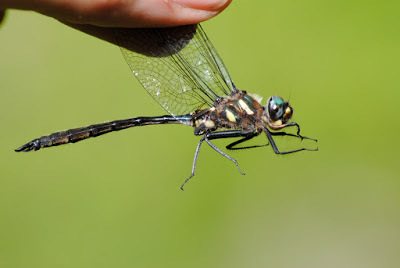 Ski-tipped Emerald (Photo: Mike Ostrowski on Wikipedia)
Ski-tipped Emerald (Photo: Mike Ostrowski on Wikipedia)
a slow moving streamwith tadpoles, minnows, insectsfor a hungry nymph
tall reeds or grass stemsto clasp while splitting openan exoskeleton
meditative timeto emerge, expand and leaveyour old life behind
then wing up to treesfor feasting on clouds of flies and mosquitoes
leaves to dangle fromin rain storms with a partnerwho likes to fly double
and damp mossy banksof a slow moving stream to dabeggs of future nymphs
©2020 Holly Thompson All rights reserved
The Ski-tipped Emerald (Somatochlora elongata) is listed under the Massachusetts Endangered Species act as a species of Special Concern. See Ski-tipped Emerald in the Mass Wildlife’s Natural Heritage and Endangered Species Program.
Write!What species are Endangered, Threatened or of Special Concern where you live? What information can you find about them? What hopes can you imagine for them? Challenge yourself and write your own set of hope poems for endangered and threatened species near you.
Why? Why write these hope poems? Writing a poem about a plant or animal is like making a sketch--it's a form of intense study and close attention--in this case, a study of endangered or threatened wildlife and their habitats wherever we live or are sheltering. To create a hope poem, we need to find empathy for the plant or animal, try to think from their perspective, then try to puzzle words together into a poem to convey hopes. A hope poem is a mindfulness exercise at this time when hope is something we all need.
These are my hope poems for #NationalPoetryMonth2020 so far:
23. Ski-tipped Emerald22. Common Loon
21. Atlantic Sturgeon
20. Eastern Pondmussel
19. Eastern Meadowlark
18. Barrens Tiger Beetle
17. Kemp's Ridley Sea Turtle
16. American Bittern
15. American Bumble Bee
14. Great Laurel
13. Humpback Whale
12. Showy Lady's Slipper
11. Pied-billed Grebe10. Frosted Elfin 9. Britton’s Violet8. Little Brown Bat7. Eastern Box Turtle6. Short-eared Owl5. Foxtail Clubmoss4. Eastern Ratsnake3. Piping Plover2. Eastern Spadefoot1. Yellow Oak
Holly Thompson (www.hatbooks.com) is an author who lives in Japan but grew up in Massachusetts where she is now sheltering during the coronavirus pandemic, getting outside to walk and observe wildlife whenever she can.

Hopes for a Ski-tipped Emerald
 Ski-tipped Emerald (Photo: Mike Ostrowski on Wikipedia)
Ski-tipped Emerald (Photo: Mike Ostrowski on Wikipedia)a slow moving streamwith tadpoles, minnows, insectsfor a hungry nymph
tall reeds or grass stemsto clasp while splitting openan exoskeleton
meditative timeto emerge, expand and leaveyour old life behind
then wing up to treesfor feasting on clouds of flies and mosquitoes
leaves to dangle fromin rain storms with a partnerwho likes to fly double
and damp mossy banksof a slow moving stream to dabeggs of future nymphs
©2020 Holly Thompson All rights reserved
The Ski-tipped Emerald (Somatochlora elongata) is listed under the Massachusetts Endangered Species act as a species of Special Concern. See Ski-tipped Emerald in the Mass Wildlife’s Natural Heritage and Endangered Species Program.
Write!What species are Endangered, Threatened or of Special Concern where you live? What information can you find about them? What hopes can you imagine for them? Challenge yourself and write your own set of hope poems for endangered and threatened species near you.
Why? Why write these hope poems? Writing a poem about a plant or animal is like making a sketch--it's a form of intense study and close attention--in this case, a study of endangered or threatened wildlife and their habitats wherever we live or are sheltering. To create a hope poem, we need to find empathy for the plant or animal, try to think from their perspective, then try to puzzle words together into a poem to convey hopes. A hope poem is a mindfulness exercise at this time when hope is something we all need.
These are my hope poems for #NationalPoetryMonth2020 so far:
23. Ski-tipped Emerald22. Common Loon
21. Atlantic Sturgeon
20. Eastern Pondmussel
19. Eastern Meadowlark
18. Barrens Tiger Beetle
17. Kemp's Ridley Sea Turtle
16. American Bittern
15. American Bumble Bee
14. Great Laurel
13. Humpback Whale
12. Showy Lady's Slipper
11. Pied-billed Grebe10. Frosted Elfin 9. Britton’s Violet8. Little Brown Bat7. Eastern Box Turtle6. Short-eared Owl5. Foxtail Clubmoss4. Eastern Ratsnake3. Piping Plover2. Eastern Spadefoot1. Yellow Oak
Holly Thompson (www.hatbooks.com) is an author who lives in Japan but grew up in Massachusetts where she is now sheltering during the coronavirus pandemic, getting outside to walk and observe wildlife whenever she can.

Published on April 23, 2020 12:03
April 22, 2020
30 Hope Poems: 22. Common Loon
Day 22 of my National Poetry Month project of 30 Hope Poems focused on native plant and animal species that are protected under the Massachusetts Endangered Species Act.
Hopes for a Common Loon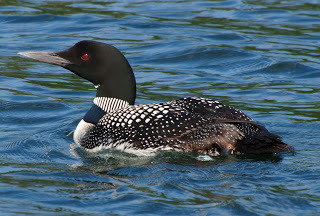 Common Loon (John Picken, Wikipedia)
Common Loon (John Picken, Wikipedia)
a lakestudded with starstwo eggs, nest undisturbeda signal call, a mate’s replyduets
©2020 Holly Thompson All rights reserved
The Common Loon (Gavia immer) is listed under the Massachusetts Endangered Species act as a species of Special Concern. See Common Loon in the Mass Wildlife’s Natural Heritage and Endangered Species Program and listing to all sorts of loon calls on The Cornell Lab's All About Birds Common Loon sounds page.
Write!What species are Endangered, Threatened or of Special Concern where you live? What information can you find about them? What hopes can you imagine for them? Challenge yourself and write your own set of hope poems for endangered and threatened species near you.
Why? Why write these hope poems? Writing a poem about a plant or animal is like making a sketch--it's a form of intense study and close attention--in this case, a study of endangered or threatened wildlife and their habitats wherever we live or are sheltering. To create a hope poem, we need to find empathy for the plant or animal, try to think from their perspective, then try to puzzle words together into a poem to convey hopes. A hope poem is a mindfulness exercise at this time when hope is something we all need.
These are my hope poems for #NationalPoetryMonth2020 so far:
22. Common Loon
21. Atlantic Sturgeon
20. Eastern Pondmussel
19. Eastern Meadowlark
18. Barrens Tiger Beetle
17. Kemp's Ridley Sea Turtle
16. American Bittern
15. American Bumble Bee
14. Great Laurel
13. Humpback Whale
12. Showy Lady's Slipper
11. Pied-billed Grebe10. Frosted Elfin 9. Britton’s Violet8. Little Brown Bat7. Eastern Box Turtle6. Short-eared Owl5. Foxtail Clubmoss4. Eastern Ratsnake3. Piping Plover2. Eastern Spadefoot1. Yellow Oak
Holly Thompson (www.hatbooks.com) is an author who lives in Japan but grew up in Massachusetts where she is now sheltering during the coronavirus pandemic, getting outside to walk and observe wildlife whenever she can.

Hopes for a Common Loon
 Common Loon (John Picken, Wikipedia)
Common Loon (John Picken, Wikipedia)a lakestudded with starstwo eggs, nest undisturbeda signal call, a mate’s replyduets
©2020 Holly Thompson All rights reserved
The Common Loon (Gavia immer) is listed under the Massachusetts Endangered Species act as a species of Special Concern. See Common Loon in the Mass Wildlife’s Natural Heritage and Endangered Species Program and listing to all sorts of loon calls on The Cornell Lab's All About Birds Common Loon sounds page.
Write!What species are Endangered, Threatened or of Special Concern where you live? What information can you find about them? What hopes can you imagine for them? Challenge yourself and write your own set of hope poems for endangered and threatened species near you.
Why? Why write these hope poems? Writing a poem about a plant or animal is like making a sketch--it's a form of intense study and close attention--in this case, a study of endangered or threatened wildlife and their habitats wherever we live or are sheltering. To create a hope poem, we need to find empathy for the plant or animal, try to think from their perspective, then try to puzzle words together into a poem to convey hopes. A hope poem is a mindfulness exercise at this time when hope is something we all need.
These are my hope poems for #NationalPoetryMonth2020 so far:
22. Common Loon
21. Atlantic Sturgeon
20. Eastern Pondmussel
19. Eastern Meadowlark
18. Barrens Tiger Beetle
17. Kemp's Ridley Sea Turtle
16. American Bittern
15. American Bumble Bee
14. Great Laurel
13. Humpback Whale
12. Showy Lady's Slipper
11. Pied-billed Grebe10. Frosted Elfin 9. Britton’s Violet8. Little Brown Bat7. Eastern Box Turtle6. Short-eared Owl5. Foxtail Clubmoss4. Eastern Ratsnake3. Piping Plover2. Eastern Spadefoot1. Yellow Oak
Holly Thompson (www.hatbooks.com) is an author who lives in Japan but grew up in Massachusetts where she is now sheltering during the coronavirus pandemic, getting outside to walk and observe wildlife whenever she can.

Published on April 22, 2020 06:40
April 21, 2020
30 Hope Poems: 21. Atlantic Sturgeon
Day 21 of my National Poetry Month project of 30 Hope Poems focused on native plant and animal species that are protected under the Massachusetts Endangered Species Act.
Hopes for an Atlantic Sturgeon
 Atlantic Sturgeon (Duane Raver/U.S. Fish and Wildlife Service)that a breach lands you back in waternot the deck of a boatthat hooks never tear your cheeksthat fishers leave you beand never hoist you and yourbony plates into the air for a photo
Atlantic Sturgeon (Duane Raver/U.S. Fish and Wildlife Service)that a breach lands you back in waternot the deck of a boatthat hooks never tear your cheeksthat fishers leave you beand never hoist you and yourbony plates into the air for a photo
that estuaries stay clean for nosingyour long snout along the bottomtrailing your barbellsto investigate your prey
that you grow unimpededand in years of your choiceyou may swim up the freshwaters of your birth
that your travels upriver are ship freeand undammed for you to spawnthat your eggs may attachto plant stems and rock ledges
that your young will thrivein the riversthat your riverswill thrive for all fish
that you may journey back to seathat you may reach ten feet longthat you may celebrate your sixtieth birthdaywith a party of mollusks and worms
©2020 Holly Thompson All rights reserved
The Atlantic Sturgeon (Acipenser oxyrinchus) is listed under the Massachusetts Endangered Species act as Endangered. See Atlantic Sturgeon in the Mass Wildlife’s Natural Heritage and Endangered Species Program.
Write!What species are Endangered, Threatened or of Special Concern where you live? What information can you find about them? What hopes can you imagine for them? Challenge yourself and write your own set of hope poems for endangered and threatened species near you.
Why? Why write these hope poems? Writing a poem about a plant or animal is like making a sketch--it's a form of intense study and close attention--in this case, a study of endangered or threatened wildlife and their habitats wherever we live or are sheltering. To create a hope poem, we need to find empathy for the plant or animal, try to think from their perspective, then try to puzzle words together into a poem to convey hopes. A hope poem is a mindfulness exercise at this time when hope is something we all need.
These are my hope poems for #NationalPoetryMonth2020 so far:
21. Atlantic Sturgeon
20. Eastern Pondmussel
19. Eastern Meadowlark
18. Barrens Tiger Beetle
17. Kemp's Ridley Sea Turtle
16. American Bittern
15. American Bumble Bee
14. Great Laurel
13. Humpback Whale
12. Showy Lady's Slipper
11. Pied-billed Grebe10. Frosted Elfin 9. Britton’s Violet8. Little Brown Bat7. Eastern Box Turtle6. Short-eared Owl5. Foxtail Clubmoss4. Eastern Ratsnake3. Piping Plover2. Eastern Spadefoot1. Yellow Oak
Holly Thompson (www.hatbooks.com) is an author who lives in Japan but grew up in Massachusetts where she is now sheltering during the coronavirus pandemic, getting outside to walk and observe wildlife whenever she can.

Hopes for an Atlantic Sturgeon
 Atlantic Sturgeon (Duane Raver/U.S. Fish and Wildlife Service)that a breach lands you back in waternot the deck of a boatthat hooks never tear your cheeksthat fishers leave you beand never hoist you and yourbony plates into the air for a photo
Atlantic Sturgeon (Duane Raver/U.S. Fish and Wildlife Service)that a breach lands you back in waternot the deck of a boatthat hooks never tear your cheeksthat fishers leave you beand never hoist you and yourbony plates into the air for a photothat estuaries stay clean for nosingyour long snout along the bottomtrailing your barbellsto investigate your prey
that you grow unimpededand in years of your choiceyou may swim up the freshwaters of your birth
that your travels upriver are ship freeand undammed for you to spawnthat your eggs may attachto plant stems and rock ledges
that your young will thrivein the riversthat your riverswill thrive for all fish
that you may journey back to seathat you may reach ten feet longthat you may celebrate your sixtieth birthdaywith a party of mollusks and worms
©2020 Holly Thompson All rights reserved
The Atlantic Sturgeon (Acipenser oxyrinchus) is listed under the Massachusetts Endangered Species act as Endangered. See Atlantic Sturgeon in the Mass Wildlife’s Natural Heritage and Endangered Species Program.
Write!What species are Endangered, Threatened or of Special Concern where you live? What information can you find about them? What hopes can you imagine for them? Challenge yourself and write your own set of hope poems for endangered and threatened species near you.
Why? Why write these hope poems? Writing a poem about a plant or animal is like making a sketch--it's a form of intense study and close attention--in this case, a study of endangered or threatened wildlife and their habitats wherever we live or are sheltering. To create a hope poem, we need to find empathy for the plant or animal, try to think from their perspective, then try to puzzle words together into a poem to convey hopes. A hope poem is a mindfulness exercise at this time when hope is something we all need.
These are my hope poems for #NationalPoetryMonth2020 so far:
21. Atlantic Sturgeon
20. Eastern Pondmussel
19. Eastern Meadowlark
18. Barrens Tiger Beetle
17. Kemp's Ridley Sea Turtle
16. American Bittern
15. American Bumble Bee
14. Great Laurel
13. Humpback Whale
12. Showy Lady's Slipper
11. Pied-billed Grebe10. Frosted Elfin 9. Britton’s Violet8. Little Brown Bat7. Eastern Box Turtle6. Short-eared Owl5. Foxtail Clubmoss4. Eastern Ratsnake3. Piping Plover2. Eastern Spadefoot1. Yellow Oak
Holly Thompson (www.hatbooks.com) is an author who lives in Japan but grew up in Massachusetts where she is now sheltering during the coronavirus pandemic, getting outside to walk and observe wildlife whenever she can.

Published on April 21, 2020 04:00
April 20, 2020
30 Hope Poems: 20. Eastern Pondmussel
Day 20 of my National Poetry Month project of 30 Hope Poems focused on native plant and animal species that are protected under the Massachusetts Endangered Species Act.
Hopes for an Eastern Pondmussel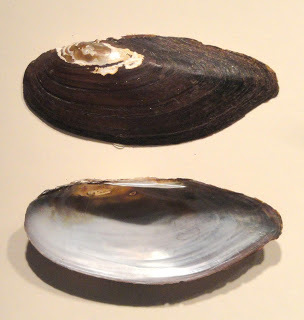 Eastern Pondmussel (Springfield Museum of Science, Springfield, MA)
Eastern Pondmussel (Springfield Museum of Science, Springfield, MA)
a slow life at the bottom of a muddy pondor mellow stream with clear unimpeded flowno milfoil, pollutants, or intruder clamsjust silt to burrow into and filter feedan abundance of detritus and algae
plus sediment to settle upon and performa papillae wave to lure a sunfish closeto host in their gills your larvae who’llmetamorphose into juveniles and one daygrow large enough to fall to the pond
or stream floor, grow more, and come to knowthemselves the slow life of the pond floor
©2020 Holly Thompson All rights reserved
The Eastern Pondmussel (Ligumia nasuta) is listed under the Massachusetts Endangered Species act as a species of Special Concern. See Eastern Pondmussel in the Mass Wildlife’s Natural Heritage and Endangered Species Program.
Write!What species are Endangered, Threatened or of Special Concern where you live? What information can you find about them? What hopes can you imagine for them? Challenge yourself and write your own set of hope poems for endangered and threatened species near you.
Why? Why write these hope poems? Writing a poem about a plant or animal is like making a sketch--it's a form of intense study and close attention--in this case, a study of endangered or threatened wildlife and their habitats wherever we live or are sheltering. To create a hope poem, we need to find empathy for the plant or animal, try to think from their perspective, then try to puzzle words together into a poem to convey hopes. A hope poem is a mindfulness exercise at this time when hope is something we all need.
These are my hope poems for #NationalPoetryMonth2020 so far:
20. Eastern Pondmussel
19. Eastern Meadowlark
18. Barrens Tiger Beetle
17. Kemp's Ridley Sea Turtle
16. American Bittern
15. American Bumble Bee
14. Great Laurel
13. Humpback Whale
12. Showy Lady's Slipper
11. Pied-billed Grebe10. Frosted Elfin 9. Britton’s Violet8. Little Brown Bat7. Eastern Box Turtle6. Short-eared Owl5. Foxtail Clubmoss4. Eastern Ratsnake3. Piping Plover2. Eastern Spadefoot1. Yellow Oak
Holly Thompson (www.hatbooks.com) is an author who lives in Japan but grew up in Massachusetts where she is now sheltering during the coronavirus pandemic, getting outside to walk and observe wildlife whenever she can.

Hopes for an Eastern Pondmussel
 Eastern Pondmussel (Springfield Museum of Science, Springfield, MA)
Eastern Pondmussel (Springfield Museum of Science, Springfield, MA)a slow life at the bottom of a muddy pondor mellow stream with clear unimpeded flowno milfoil, pollutants, or intruder clamsjust silt to burrow into and filter feedan abundance of detritus and algae
plus sediment to settle upon and performa papillae wave to lure a sunfish closeto host in their gills your larvae who’llmetamorphose into juveniles and one daygrow large enough to fall to the pond
or stream floor, grow more, and come to knowthemselves the slow life of the pond floor
©2020 Holly Thompson All rights reserved
The Eastern Pondmussel (Ligumia nasuta) is listed under the Massachusetts Endangered Species act as a species of Special Concern. See Eastern Pondmussel in the Mass Wildlife’s Natural Heritage and Endangered Species Program.
Write!What species are Endangered, Threatened or of Special Concern where you live? What information can you find about them? What hopes can you imagine for them? Challenge yourself and write your own set of hope poems for endangered and threatened species near you.
Why? Why write these hope poems? Writing a poem about a plant or animal is like making a sketch--it's a form of intense study and close attention--in this case, a study of endangered or threatened wildlife and their habitats wherever we live or are sheltering. To create a hope poem, we need to find empathy for the plant or animal, try to think from their perspective, then try to puzzle words together into a poem to convey hopes. A hope poem is a mindfulness exercise at this time when hope is something we all need.
These are my hope poems for #NationalPoetryMonth2020 so far:
20. Eastern Pondmussel
19. Eastern Meadowlark
18. Barrens Tiger Beetle
17. Kemp's Ridley Sea Turtle
16. American Bittern
15. American Bumble Bee
14. Great Laurel
13. Humpback Whale
12. Showy Lady's Slipper
11. Pied-billed Grebe10. Frosted Elfin 9. Britton’s Violet8. Little Brown Bat7. Eastern Box Turtle6. Short-eared Owl5. Foxtail Clubmoss4. Eastern Ratsnake3. Piping Plover2. Eastern Spadefoot1. Yellow Oak
Holly Thompson (www.hatbooks.com) is an author who lives in Japan but grew up in Massachusetts where she is now sheltering during the coronavirus pandemic, getting outside to walk and observe wildlife whenever she can.

Published on April 20, 2020 04:00
April 19, 2020
30 Hope Poems: 19. Eastern Meadowlark
Day 19 of my National Poetry Month project of 30 Hope Poems focused on native plant and animal species that are protected under the Massachusetts Endangered Species Act.
Hopes for an Eastern Meadowlark Eastern Meadowlark (Sherry Douse at Audubon.org)
Eastern Meadowlark (Sherry Douse at Audubon.org)
acres and stretches of open landfor constructing a grassy nest
designed complete with an entrywayand stroll paths tunneled through stems
pasture space for flocks to spreadstrut after insects, probe for seeds
fence posts and poles to perch uponand trill those downward calls
urging mowers to patiently bide their timeno cutting! till fledglings can fly
©2020 Holly Thompson All rights reserved
The Eastern Meadowlark (Sturnella magna) is listed under the Massachusetts Endangered Species act as a species of Special Concern. See Eastern Meadowlark in the Mass Wildlife’s Natural Heritage and Endangered Species Program.
Write!What species are Endangered, Threatened or of Special Concern where you live? What information can you find about them? What hopes can you imagine for them? Challenge yourself and write your own set of hope poems for endangered and threatened species near you.
Why? Why write these hope poems? Writing a poem about a plant or animal is like making a sketch--it's a form of intense study and close attention--in this case, a study of endangered or threatened wildlife and their habitats wherever we live or are sheltering. To create a hope poem, we need to find empathy for the plant or animal, try to think from their perspective, then try to puzzle words together into a poem to convey hopes. A hope poem is a mindfulness exercise at this time when hope is something we all need.
These are my hope poems for #NationalPoetryMonth2020 so far:
19. Eastern Meadowlark
18. Barrens Tiger Beetle
17. Kemp's Ridley Sea Turtle
16. American Bittern
15. American Bumble Bee
14. Great Laurel
13. Humpback Whale
12. Showy Lady's Slipper
11. Pied-billed Grebe10. Frosted Elfin 9. Britton’s Violet8. Little Brown Bat7. Eastern Box Turtle6. Short-eared Owl5. Foxtail Clubmoss4. Eastern Ratsnake3. Piping Plover2. Eastern Spadefoot1. Yellow Oak
Holly Thompson (www.hatbooks.com) is an author who lives in Japan but grew up in Massachusetts where she is now sheltering during the coronavirus pandemic, getting outside to walk and observe wildlife whenever she can.

Hopes for an Eastern Meadowlark
 Eastern Meadowlark (Sherry Douse at Audubon.org)
Eastern Meadowlark (Sherry Douse at Audubon.org)acres and stretches of open landfor constructing a grassy nest
designed complete with an entrywayand stroll paths tunneled through stems
pasture space for flocks to spreadstrut after insects, probe for seeds
fence posts and poles to perch uponand trill those downward calls
urging mowers to patiently bide their timeno cutting! till fledglings can fly
©2020 Holly Thompson All rights reserved
The Eastern Meadowlark (Sturnella magna) is listed under the Massachusetts Endangered Species act as a species of Special Concern. See Eastern Meadowlark in the Mass Wildlife’s Natural Heritage and Endangered Species Program.
Write!What species are Endangered, Threatened or of Special Concern where you live? What information can you find about them? What hopes can you imagine for them? Challenge yourself and write your own set of hope poems for endangered and threatened species near you.
Why? Why write these hope poems? Writing a poem about a plant or animal is like making a sketch--it's a form of intense study and close attention--in this case, a study of endangered or threatened wildlife and their habitats wherever we live or are sheltering. To create a hope poem, we need to find empathy for the plant or animal, try to think from their perspective, then try to puzzle words together into a poem to convey hopes. A hope poem is a mindfulness exercise at this time when hope is something we all need.
These are my hope poems for #NationalPoetryMonth2020 so far:
19. Eastern Meadowlark
18. Barrens Tiger Beetle
17. Kemp's Ridley Sea Turtle
16. American Bittern
15. American Bumble Bee
14. Great Laurel
13. Humpback Whale
12. Showy Lady's Slipper
11. Pied-billed Grebe10. Frosted Elfin 9. Britton’s Violet8. Little Brown Bat7. Eastern Box Turtle6. Short-eared Owl5. Foxtail Clubmoss4. Eastern Ratsnake3. Piping Plover2. Eastern Spadefoot1. Yellow Oak
Holly Thompson (www.hatbooks.com) is an author who lives in Japan but grew up in Massachusetts where she is now sheltering during the coronavirus pandemic, getting outside to walk and observe wildlife whenever she can.

Published on April 19, 2020 03:00
April 18, 2020
30 Hope Poems: 18. Barrens Tiger Beetle
Day 18 of my National Poetry Month project of 30 Hope Poems focused on native plant and animal species that are protected under the Massachusetts Endangered Species Act.
Hopes for a Barrens Tiger Beetle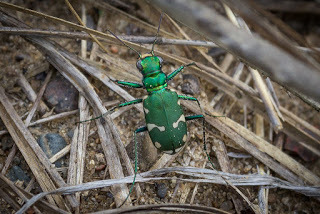 Barrens Tiger Beetle (iNaturalist.org)
Barrens Tiger Beetle (iNaturalist.org)
warm sunny daysin pine barren sandsfor sprinting after prey
strong wings for a getawaya burrow or hidey holeat the end of the day
©2020 Holly Thompson All rights reserved
The Barrens Tiger Beetle (Cicindela patruela) is listed under the Massachusetts Endangered Species act as Endangered. See Barrens Tiger Beetle in the Mass Wildlife’s Natural Heritage and Endangered Species Program.
Write!What species are Endangered, Threatened or of Special Concern where you live? What information can you find about them? What hopes can you imagine for them? Challenge yourself and write your own set of hope poems for endangered and threatened species near you.
Why? Why write these hope poems? Writing a poem about a plant or animal is like making a sketch--it's a form of intense study and close attention--in this case, a study of endangered or threatened wildlife and their habitats wherever we live or are sheltering. To create a hope poem, we need to find empathy for the plant or animal, try to think from their perspective, then try to puzzle words together into a poem to convey hopes. A hope poem is a mindfulness exercise at this time when hope is something we all need.
These are my hope poems for #NationalPoetryMonth2020 so far:
18. Barrens Tiger Beetle
17. Kemp's Ridley Sea Turtle
16. American Bittern
15. American Bumble Bee
14. Great Laurel
13. Humpback Whale
12. Showy Lady's Slipper
11. Pied-billed Grebe10. Frosted Elfin 9. Britton’s Violet8. Little Brown Bat7. Eastern Box Turtle6. Short-eared Owl5. Foxtail Clubmoss4. Eastern Ratsnake3. Piping Plover2. Eastern Spadefoot1. Yellow Oak
Holly Thompson (www.hatbooks.com) is an author who lives in Japan but grew up in Massachusetts where she is now sheltering during the coronavirus pandemic, getting outside to walk and observe wildlife whenever she can.

Hopes for a Barrens Tiger Beetle
 Barrens Tiger Beetle (iNaturalist.org)
Barrens Tiger Beetle (iNaturalist.org)warm sunny daysin pine barren sandsfor sprinting after prey
strong wings for a getawaya burrow or hidey holeat the end of the day
©2020 Holly Thompson All rights reserved
The Barrens Tiger Beetle (Cicindela patruela) is listed under the Massachusetts Endangered Species act as Endangered. See Barrens Tiger Beetle in the Mass Wildlife’s Natural Heritage and Endangered Species Program.
Write!What species are Endangered, Threatened or of Special Concern where you live? What information can you find about them? What hopes can you imagine for them? Challenge yourself and write your own set of hope poems for endangered and threatened species near you.
Why? Why write these hope poems? Writing a poem about a plant or animal is like making a sketch--it's a form of intense study and close attention--in this case, a study of endangered or threatened wildlife and their habitats wherever we live or are sheltering. To create a hope poem, we need to find empathy for the plant or animal, try to think from their perspective, then try to puzzle words together into a poem to convey hopes. A hope poem is a mindfulness exercise at this time when hope is something we all need.
These are my hope poems for #NationalPoetryMonth2020 so far:
18. Barrens Tiger Beetle
17. Kemp's Ridley Sea Turtle
16. American Bittern
15. American Bumble Bee
14. Great Laurel
13. Humpback Whale
12. Showy Lady's Slipper
11. Pied-billed Grebe10. Frosted Elfin 9. Britton’s Violet8. Little Brown Bat7. Eastern Box Turtle6. Short-eared Owl5. Foxtail Clubmoss4. Eastern Ratsnake3. Piping Plover2. Eastern Spadefoot1. Yellow Oak
Holly Thompson (www.hatbooks.com) is an author who lives in Japan but grew up in Massachusetts where she is now sheltering during the coronavirus pandemic, getting outside to walk and observe wildlife whenever she can.

Published on April 18, 2020 03:00
April 16, 2020
30 Hope Poems: 17. Kemp's Ridley Sea Turtle
It's #PoetryFriday and Day 17 of my National Poetry Month project of 30 Hope Poems focused on native plant and animal species that are protected under the Massachusetts Endangered Species Act.
Hopes for a Kemp’s Ridley Sea Turtle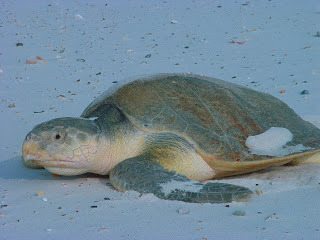 Kemp's Ridley Sea Turtle (U.S. Fish and Wildlife Service)
Kemp's Ridley Sea Turtle (U.S. Fish and Wildlife Service)
that when you are cold-stunned
and stranded on an autumn beach
some kind searchers will spot you
and lift your too-chilled body
into a banana box and transport you
to a wildlife sanctuary for rescue
triage, examination, recuperation
or an aquarium for rehabilitation
or, if dire, a sea turtle hospital
for fluids, intubation and pools
for gently raising your temperature
and spirits then flying you south
to a beach where you will be held
and carried over sun warmed sands
and set once again into gentle waves
©2020 Holly Thompson All rights reserved
The Kemp's Ridley Sea Turtle (Lepidochelys kempii) is listed under the Massachusetts Endangered Species act as Endangered. See Kemp's Ridley Sea Turtle in the Mass Wildlife’s Natural Heritage and Endangered Species Program and in Creature Feature.
Write!What species are Endangered, Threatened or of Special Concern where you live? What information can you find about them? What hopes can you imagine for them? Challenge yourself and write your own set of hope poems for endangered and threatened species near you.
Why? Why write these hope poems? Writing a poem about a plant or animal is like making a sketch--it's a form of intense study and close attention--in this case, a study of endangered or threatened wildlife and their habitats wherever we live or are sheltering. To create a hope poem, we need to find empathy for the plant or animal, try to think from their perspective, then try to puzzle words together into a poem to convey hopes. A hope poem is a mindfulness exercise at this time when hope is something we all need.
These are my hope poems for #NationalPoetryMonth2020 so far:
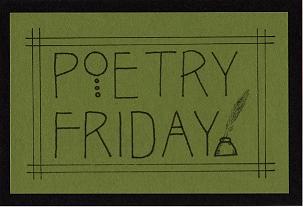 17. Kemp's Ridley Sea Turtle
17. Kemp's Ridley Sea Turtle
16. American Bittern
15. American Bumble Bee
14. Great Laurel
13. Humpback Whale
12. Showy Lady's Slipper
11. Pied-billed Grebe10. Frosted Elfin 9. Britton’s Violet8. Little Brown Bat7. Eastern Box Turtle6. Short-eared Owl5. Foxtail Clubmoss4. Eastern Ratsnake3. Piping Plover2. Eastern Spadefoot1. Yellow Oak
Holly Thompson (www.hatbooks.com) is an author who lives in Japan but grew up in Massachusetts where she is now sheltering during the coronavirus pandemic, getting outside to walk and observe wildlife whenever she can.

Hopes for a Kemp’s Ridley Sea Turtle
 Kemp's Ridley Sea Turtle (U.S. Fish and Wildlife Service)
Kemp's Ridley Sea Turtle (U.S. Fish and Wildlife Service)that when you are cold-stunned
and stranded on an autumn beach
some kind searchers will spot you
and lift your too-chilled body
into a banana box and transport you
to a wildlife sanctuary for rescue
triage, examination, recuperation
or an aquarium for rehabilitation
or, if dire, a sea turtle hospital
for fluids, intubation and pools
for gently raising your temperature
and spirits then flying you south
to a beach where you will be held
and carried over sun warmed sands
and set once again into gentle waves
©2020 Holly Thompson All rights reserved
The Kemp's Ridley Sea Turtle (Lepidochelys kempii) is listed under the Massachusetts Endangered Species act as Endangered. See Kemp's Ridley Sea Turtle in the Mass Wildlife’s Natural Heritage and Endangered Species Program and in Creature Feature.
Write!What species are Endangered, Threatened or of Special Concern where you live? What information can you find about them? What hopes can you imagine for them? Challenge yourself and write your own set of hope poems for endangered and threatened species near you.
Why? Why write these hope poems? Writing a poem about a plant or animal is like making a sketch--it's a form of intense study and close attention--in this case, a study of endangered or threatened wildlife and their habitats wherever we live or are sheltering. To create a hope poem, we need to find empathy for the plant or animal, try to think from their perspective, then try to puzzle words together into a poem to convey hopes. A hope poem is a mindfulness exercise at this time when hope is something we all need.
These are my hope poems for #NationalPoetryMonth2020 so far:
 17. Kemp's Ridley Sea Turtle
17. Kemp's Ridley Sea Turtle16. American Bittern
15. American Bumble Bee
14. Great Laurel
13. Humpback Whale
12. Showy Lady's Slipper
11. Pied-billed Grebe10. Frosted Elfin 9. Britton’s Violet8. Little Brown Bat7. Eastern Box Turtle6. Short-eared Owl5. Foxtail Clubmoss4. Eastern Ratsnake3. Piping Plover2. Eastern Spadefoot1. Yellow Oak
Holly Thompson (www.hatbooks.com) is an author who lives in Japan but grew up in Massachusetts where she is now sheltering during the coronavirus pandemic, getting outside to walk and observe wildlife whenever she can.

Published on April 16, 2020 19:00



